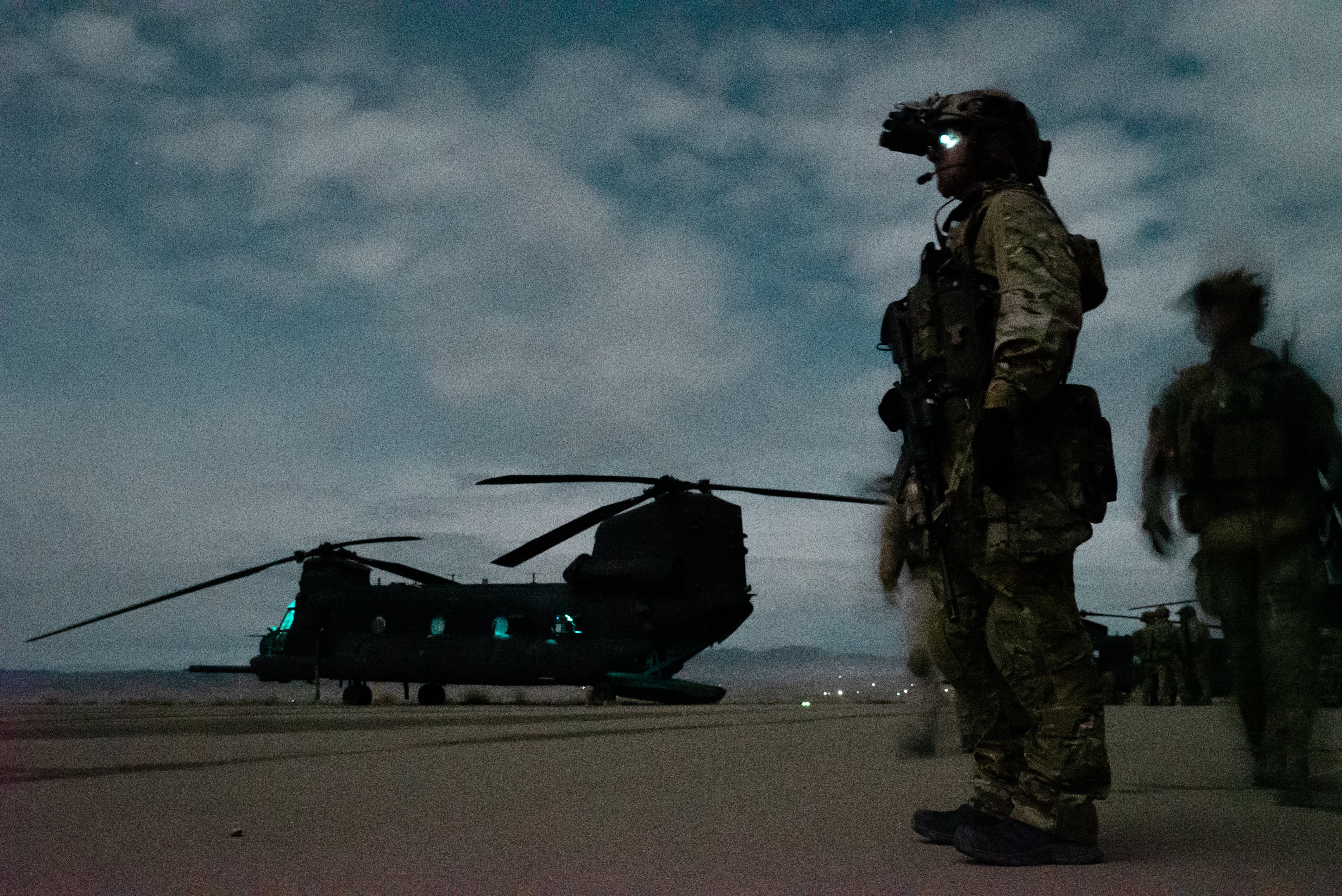The U.S. is still bombing the hell out of the Taliban and other militants despite ongoing peace talks and the expected kick off of intra-Afghan talks.
The high strike figures do not bode well for American hopes that the Afghan Air Force can sustain air power against the Taliban and other militants as American troops seek to exit the 18-year long conflict.
Just three days after Taliban announced on March 2 the resumption of operations against Afghan forces following a partial truce in late February, American warplanes were forced to bail out Afghan troops striking Taliban militants attempting to overrun a checkpoint.
American warplanes dropped 360 bombs on militants across Afghanistan during the month of February — it’s the second highest total for that month since U.S. Air Forces Central Command began tallying munitions releases.
RELATED

The record number of munitions released during the month of February happened in 2018 with 469 bombs dropped by American aircraft. 2011 and 2019 are the only two other years during the past decade where U.S. aircraft manage to drop more than 300 munitions in February.
The U.S. has started 2020 with a bang, dropping a total of 775 bombs over the last two months, setting a pace reminiscent of the last two bloody years of fighting.
American warplanes dropped more than 14,000 munitions between 2018 and 2019 as the U.S. sought to pressure the Taliban to negotiate and end to the war.
The last two years have seen record air strikes, enemy initiated attacks and soaring violence as parties to the conflict jockey for leverage over negotiations.
With the kick off of intra-Afghan negotiations expected just around the corner, 2020 is shaping to be a redux of high stakes tit-for-tat violence between combative foes.
The strike figures are high considering the winter months in Afghanistan often see a lull in fighting as Taliban and Afghan forces are hindered by bad weather and blocked passes.
Moreover, the U.S. and Taliban inked a agreement on Feb. 29 that calls for a reduction in violence across Afghanistan and the withdrawal of U.S. forces over the next 14 months.
The lead-up to the deal signed in Doha, Qatar, Taliban militants successfully controlled their fighters on the battlefield and implemented a trial reduction in violence period for seven days convincing U.S. officials to sign the Feb. 29 deal.
Gen. Mark Milley, the Joint Chiefs chairman, said attacks across Afghanistan from Feb. 22 to Feb. 29 dropped from over 100 attacks a day to just 15.
But Taliban fighters have recently resumed operations against Afghan forces with violence spiking across the country.
Marine Gen. Kenneth McKenzie Jr., the commander of U.S. Central Command, told lawmakers on Capitol Hill that the Taliban were not living up to their commitments to reduce violence across the country.
U.S. forces are amid a draw down to 8,600 troops, but any further troop reductions beyond that could be delayed, McKenzie said Thursday.
The CENTCOM commander told senators Thursday that he would advise not reducing the U.S. footprint below 8,600 if Afghan forces are unable to defend the country.
The continued high pace of U.S. air strikes across Afghanistan is a warning sign that the Afghan Air Force is still not capable of carrying the mantle for providing close air support and precision strikes on Taliban and other militants.
Meaning, U.S. troops may be stuck in Afghanistan if Afghan forces cannot hold the line without American air support.
There are other worrying signs too. The U.S. recently decided to ax the number of UH-60 Black Hawks it intended to provide to Afghan forces from a total of 159 to just 53.
“The department continually works with its Afghan partners to re-assess operational requirements over time and adjusts as appropriate,” Lt. Col. Thomas Campbell, a Pentagon spokesman, told Military Times in an emailed statement.
“Similarly, the reduction in advisors reflects the assessment of U.S. commanders that the Afghan Air Force is increasingly capable of conducting operations independently,” Campbell said.
The Afghan air force also recently cut training for its Afghan air tactical controllers who help coordinate close air support and strike packages for Afghan forces.
A recent DoD report noted that Afghan air controllers were underutilized and that the Afghan army “was reluctant to leverage AAF-trained professionals during airstrike employment.”
The ability to deliver time-sensitive close air support to maneuvering ground forces is vital for Afghan forces combating a host of terror and militant groups across the country.
For now, American bombs continue to rain down on ISIS and Taliban militants as the U.S. ponders what it would be like to potentially exit its longest war.
Shawn Snow is the senior reporter for Marine Corps Times and a Marine Corps veteran.




